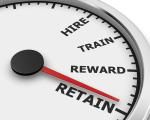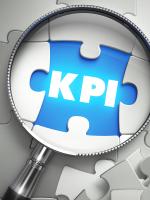CHICAGO — It’s important for owners of drycleaning companies to have good instincts about both people and business, but the old saying “you can’t manage what you can’t measure” is one successful leaders take to heart.
Measuring their company’s key performance indicators—KPIs—gives an owner or manager a window into how the business is actually doing, rather than relying on their “gut,” or worse, just hoping things are going in the right direction.
“KPIs are a scorecard of measurements that drive the activity of the business,” says Kermit Engh. He owns Fashion Cleaners in Omaha, Nebraska, and is managing partner of Methods for Management (MfM), a consulting firm for the drycleaning industry.
Engh has found, both through personal experience and from working with MfM clients, that getting a true view of a company’s viability is key to future survival.
“Ultimately, success is measured by the profitability and sustainability of the business,” he says. “If it’s not profitable, it’s not sustainable.”
Diana Vollmer, managing director of the Ascend Consulting Group, agrees with Engh’s assessment.
“By far, the most important KPI in an ongoing business is profitability,” says Vollmer, who also runs the Drycleaning & Laundry Institute (DLI) Management Group. “All the other underlying KPIs are designed to contribute to long-term profit. KPIs are a roadmap to how to improve your business.”
Facts and Figures
Part of owners effectively using their company’s KPIs as a GPS for success is determining which ones are most important to their business.
“I find an awful lot of people—and I used to be guilty of this, as well—who are always focused on the top line, or the gross sales number on the P&L (profit and loss) statement. Ultimately, that’s not the most important number on that report. It’s the bottom line,” Engh says.
He says he’s been surprised in the past by owners he’s spoken with who don’t understand what profitability actually means.
“I find it very interesting when I ask them, ‘How do you know if you’re making a profit?’ and they say, ‘I checked my bank account.’ My comment to that always is, ‘Well, I can play that game too by just not paying my bills. But that doesn’t mean that I have a successful business.’”
To better understand the P&L, Engh suggests looking at the company’s EBITAL (Earnings Before Interest, Taxes, Amortization and Leasing) information: “To get to that number, there are a number of KPIs that we look at, such as total labor cost, utility costs, supply costs, marketing costs, overhead (including rents), and executive compensation.”
While P&L is crucial, it’s far from the only KPI that can inform a leader about how his or her business is performing. Modern point-of-sale (POS) systems can provide increasingly granular data on almost every aspect of a business.
“This is an area where the POS systems have really stepped up over recent years,” Engh says. “You’re able to create your own customized dashboard to measure the production and revenue numbers that are important to your business. At a glance, you know how you’re doing. There’s no more digging through numerous reports or begging the POS company to create a report for you.”
Another KPI that Engh finds valuable is pieces per operating hour (PPOH).
“Most dry cleaners are familiar with this, but I still run into some that don’t measure it,” he says. “It’s easy to calculate by dividing the number of pieces you processed by the total hours that it took you to process them. Many folks then post this number daily to let the staff know how they did the day before. I find that important so that the staff knows if they are on target, and if they had a good day or not.”
Vollmer suggests drycleaning owners also pay attention to other critical KPIs, such as:
- Sales and/or profit per full-time-equivalent (40-hour) employee
- Profitability by department
- Labor percentage to sales (ideally broken down by department)
- Sales per CSR (customer service representative) hour worked
- Sales per stop on route
- Sales per customer
- Average revenue per piece
Because there are a lot of moving parts in a drycleaning business, Vollmer understands that the process of tracking this information can be complicated.
“We’re in a production business, and it’s as complicated a business as there is,” she says. “We combine production, customer service, sales, and marketing. You don’t even get to start with a raw product, you start with a finished product that has to be brought back to like-new condition. In a sense, each production piece is different.”
Come back Thursday for Part 2 of this series, where we’ll look at how to put it all together while avoiding data overload.
Have a question or comment? E-mail our editor Dave Davis at [email protected].







































































